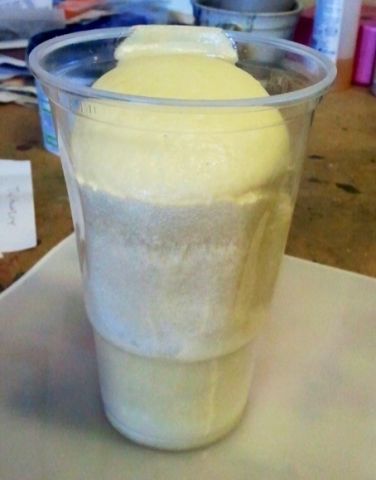The Essence of Foams
I have noted in many of my resin experiments that when I add certain substances and pigments to resins, the cured resin contains thousands of minuscule bubbles; a kind of solidified foam. Although I’ve discovered that this is caused by oxygen and moisture, it’s still incredibly difficult to recreate deliberately. And when I do, although it looks awesome, the structure is unstable and breaks easily. Not good for making permanent art.
My quest for mastering the creation of bubbles was something I put to Pete the chemist upon his last visit to my studio. Apparently the reason that my foams are so breakable is because when the bubbles form they don’t stay separate from one another, but instead their walls conjoin to form ‘super bubbles’ made up of a multitude of tiny ones. Think of the crossover part in the centre of a figure of eight splitting so the two loops become one giant misshapen hole. Without a regular structure, and with walls too weak to support their length, these bubbles cave in upon themselves as soon as they are subjected to any force. So what’s the solution?
Well it seems that the only thing to do is design polymers with the specific goal of creating a structurally sound foam. This is where a polymer chemist comes in, designing a resin which deliberately foams as it sets to create millions of tiny, evenly sized bubbles which remain intact and whole, and do not join with their neighbours.
Pete introduced me to the exciting world of polyurethane foams during his recent visit to my studio. A small quantity of resin was mixed with its catalyst and poured into a pint glass… And then it foamed! It foamed so much that it almost escaped from the glass! Once set and I had sliced it through, the perfect structure of bubbles was revealed. It’s put me in awe of polymer chemists, because however does someone go about designing a material that always reacts in such a specific way?
I’m not yet entirely sure what I’ll do with this piece of research but I’m fascinated by it nonetheless.

